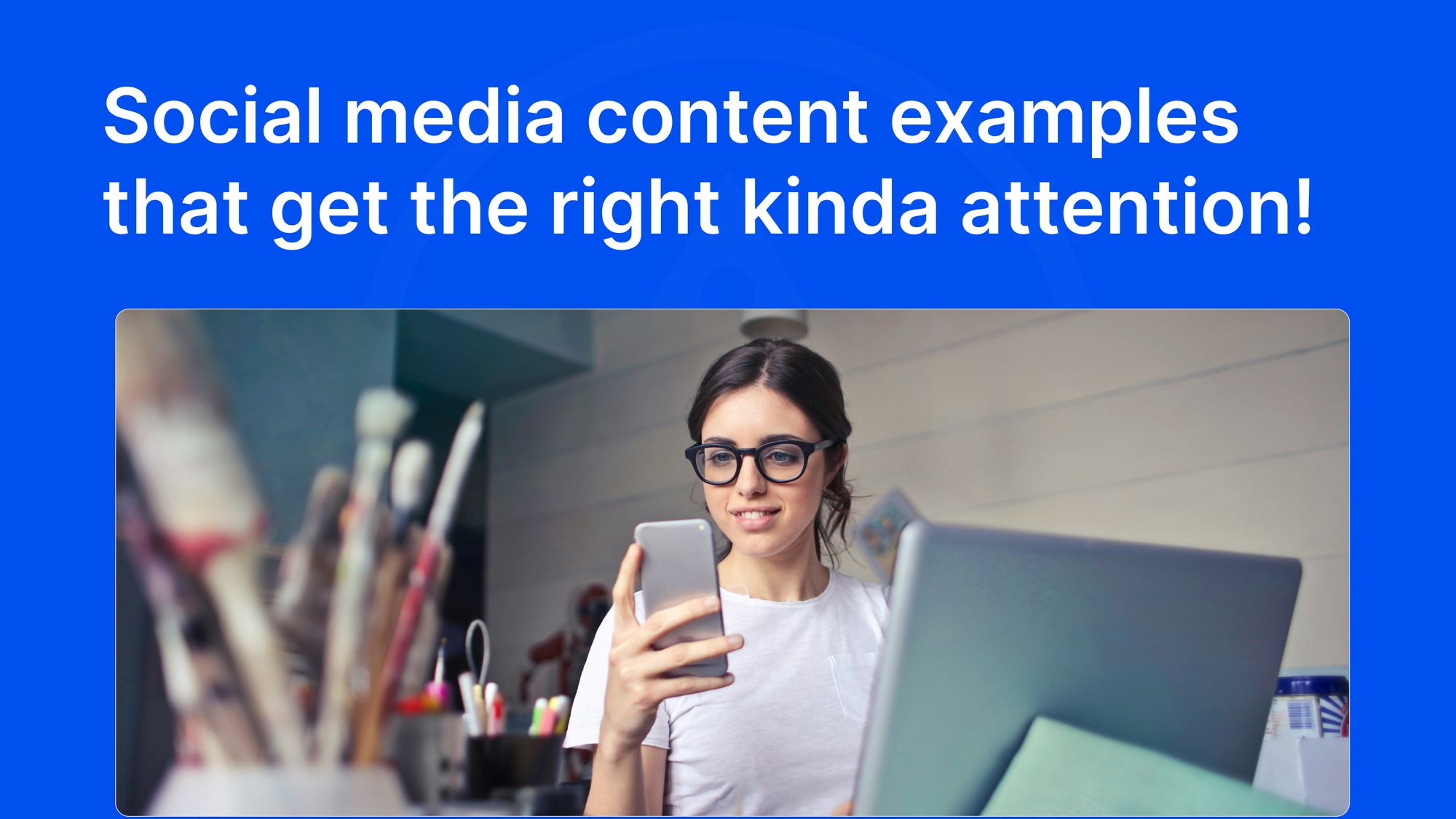According to GWI, 49% of internet users say they are likely to purchase from brands they see advertised on social media.
But those purchases won't be inspired by sub-par web content on social media platforms. Good, creative social media content can work wonders, but the keyword here is "good.“
So, what does that look like? This article's social media content examples will answer that question.
• Social media is one of the most profitable and effective forms of digital marketing in existence. But not every social media post will get you customers. Good content will.
• Well, what is "good" in this regard? The experts are best able to answer that. In this article, you'll see seven examples of "good" social media content. They are crafted and published by well-known market leaders: Taboola, HubSpot, Google, Moz, etc. These posts have generated desirable results, and any social media content creator can take a page (or five) out of their books.
• Good social media content is immediately relatable, brief (usually), and prioritizes the viewer/reader's perspective. In other words, it has to be something that matters to your audience. These examples will reveal how the best brands do exactly that.
• Now, once you have your excellent social media posts to your name, it's time to show them off on your social media portfolio. If you don't already have one or are planning to upgrade your existing portfolio, take a moment to look through the three social media portfolio examples in this piece. When you know what the industry standards are, you can meet and even surpass them.
• Finally, consider a portfolio-building tool that does 90% of the work for you. Check out the video on "How Authory works" — you enter the URL of the sites where your work is published, and Authory will import all your bylined work to its database. You can now look through all your pieces in a single location.
Examples of social media content writing that hit the proverbial spot
HubSpot — a targeted, straightforward social media post
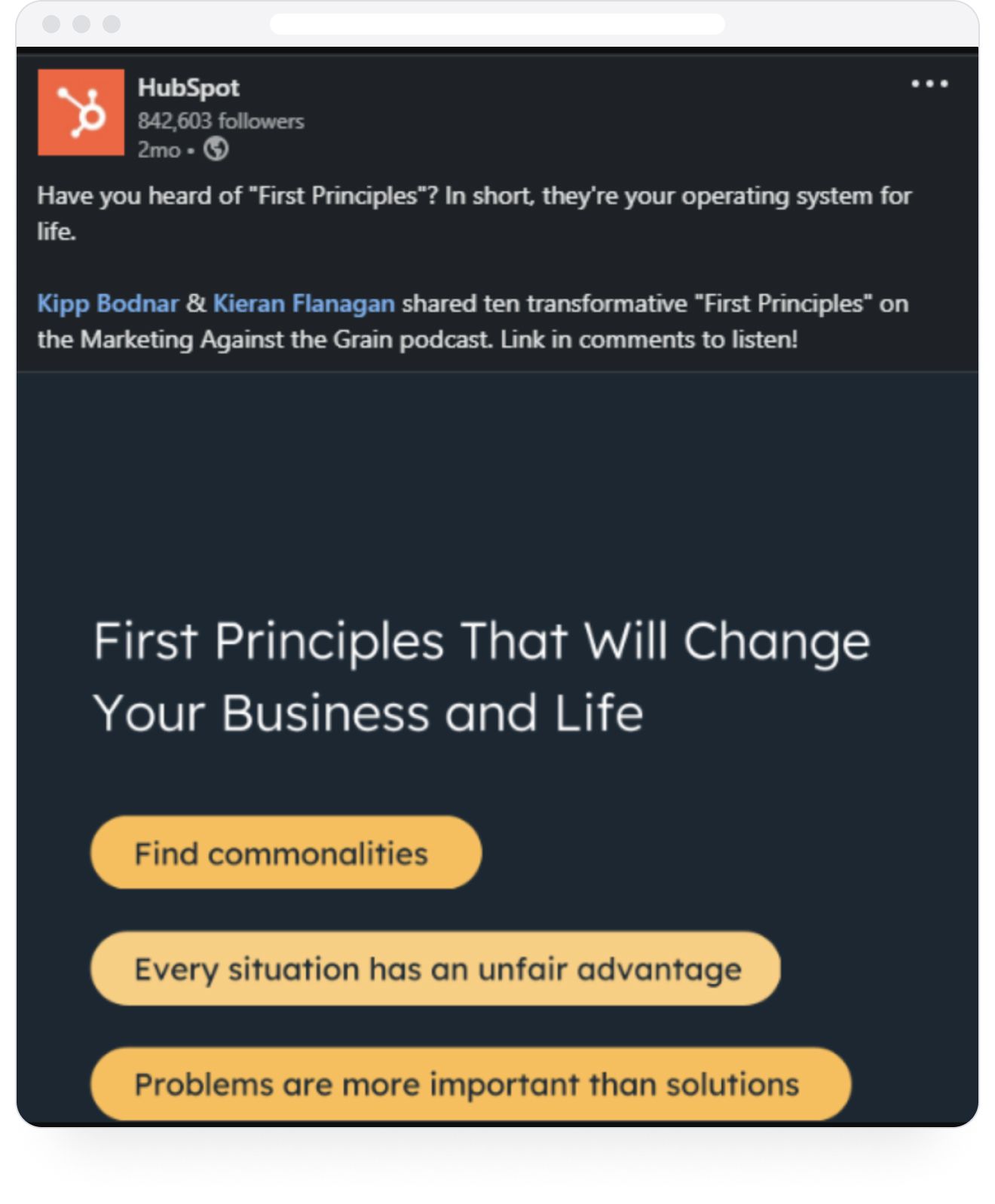
"Every situation has an unfair advantage," and "Problems are more important than solutions.”
With copy like this, HubSpot proves why they are ahead in terms of social media strategy. A post like this, one that speaks directly to readers and offers them something to hack their own lives, will inevitably get attention. It doesn't even have to be SEO content; the point is to give readers something of true value, i.e., the "operating system for life.".
When creating content for social media marketing, ask yourself first and foremost, "Would I get any real value out of this if I was on the other end?" The answer will be based on your understanding of the audience and determine the quality of your social media writing.
Taboola — seasonal social media content
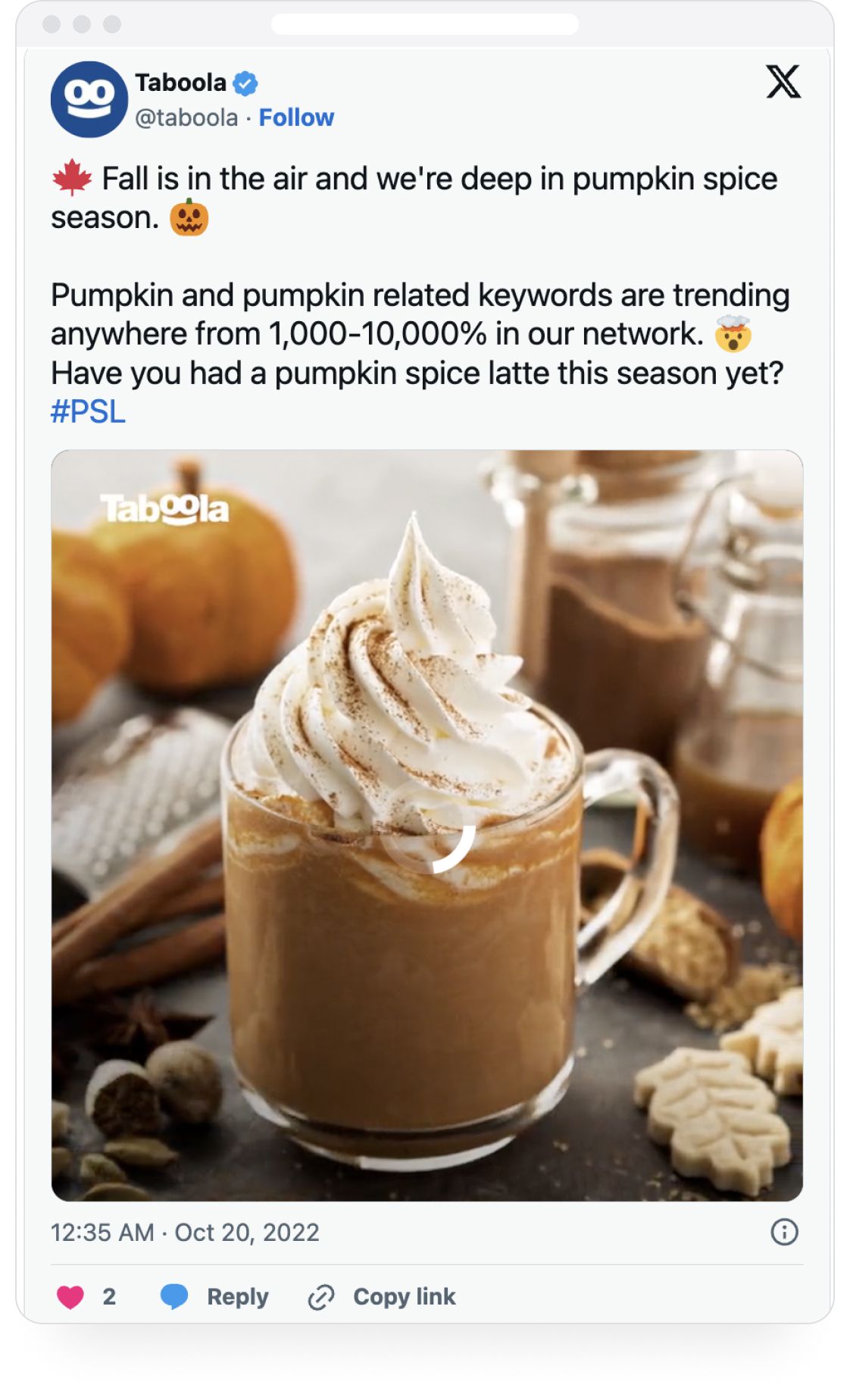
Notice how the copy doesn't try to make an overt sale. All it asks is if you've had a pumpkin spice latte.
And yet, you notice that Taboola is a powerful platform. How else would they have keywords trending "1,000-10,000%" in their network?
This is what quality content looks like. It addressed something immediately relevant (fall and pumpkin spice vibes), and seamlessly connects it to an essential marketing insight that directly points to the value of the product in question. Needless to say, this is among the best social media content examples you'll find in the B2B space.
Amgen Oncology — interactive content for social media
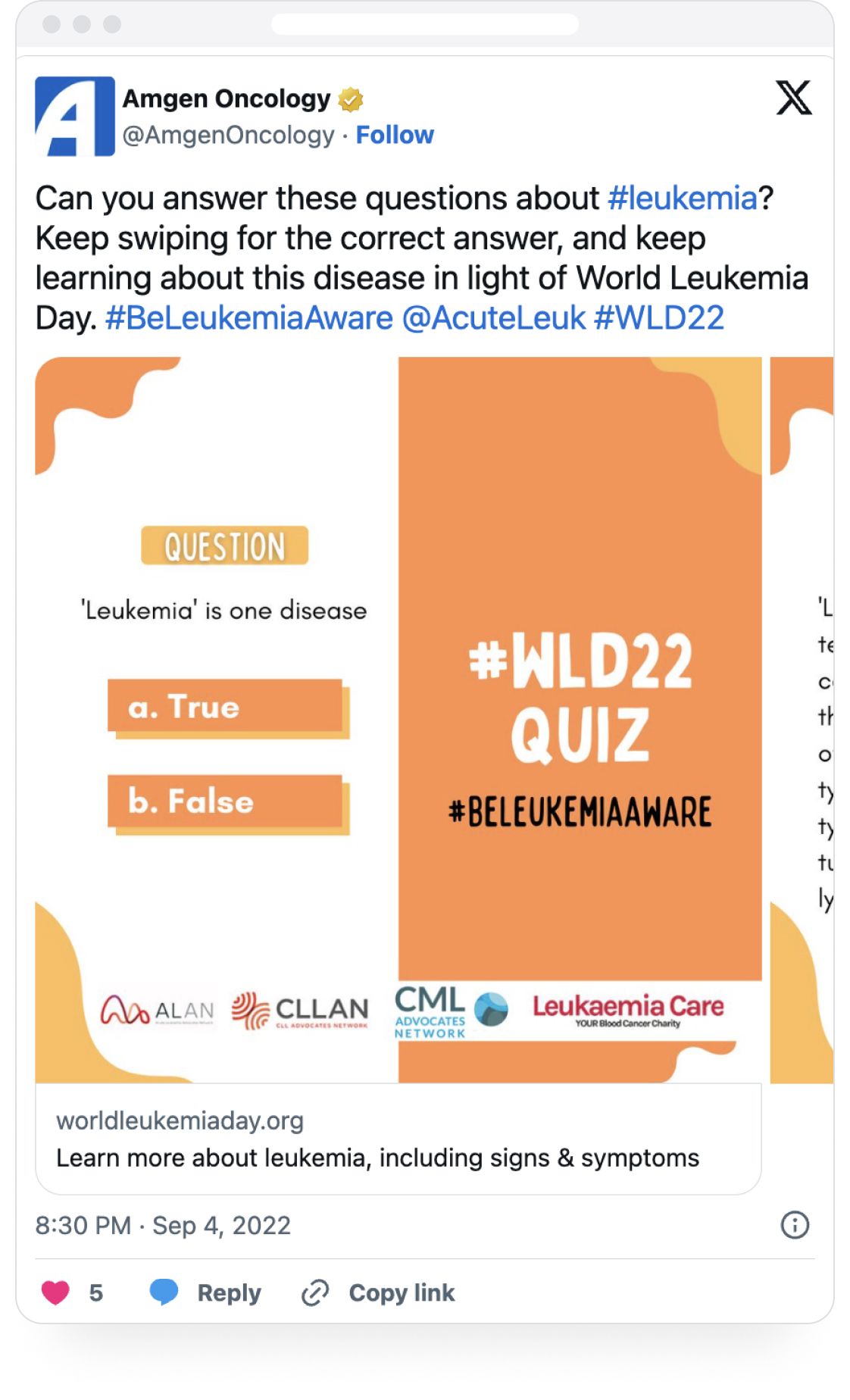
The easiest way to get people to invest in something is to persuade them to engage with it. What better way to do that than draw them in with a quiz?
Amgen Oncology prioritized learning to raise awareness around World Leukemia Day. It encourages people to learn more about leukemia by answering questions. The gorgeous color palette adds to the post's visual allure.
If you write content for social media, take your cues from whatever content strategy Amgel Oncology is following right here.
Google — getting good content out of customer stories
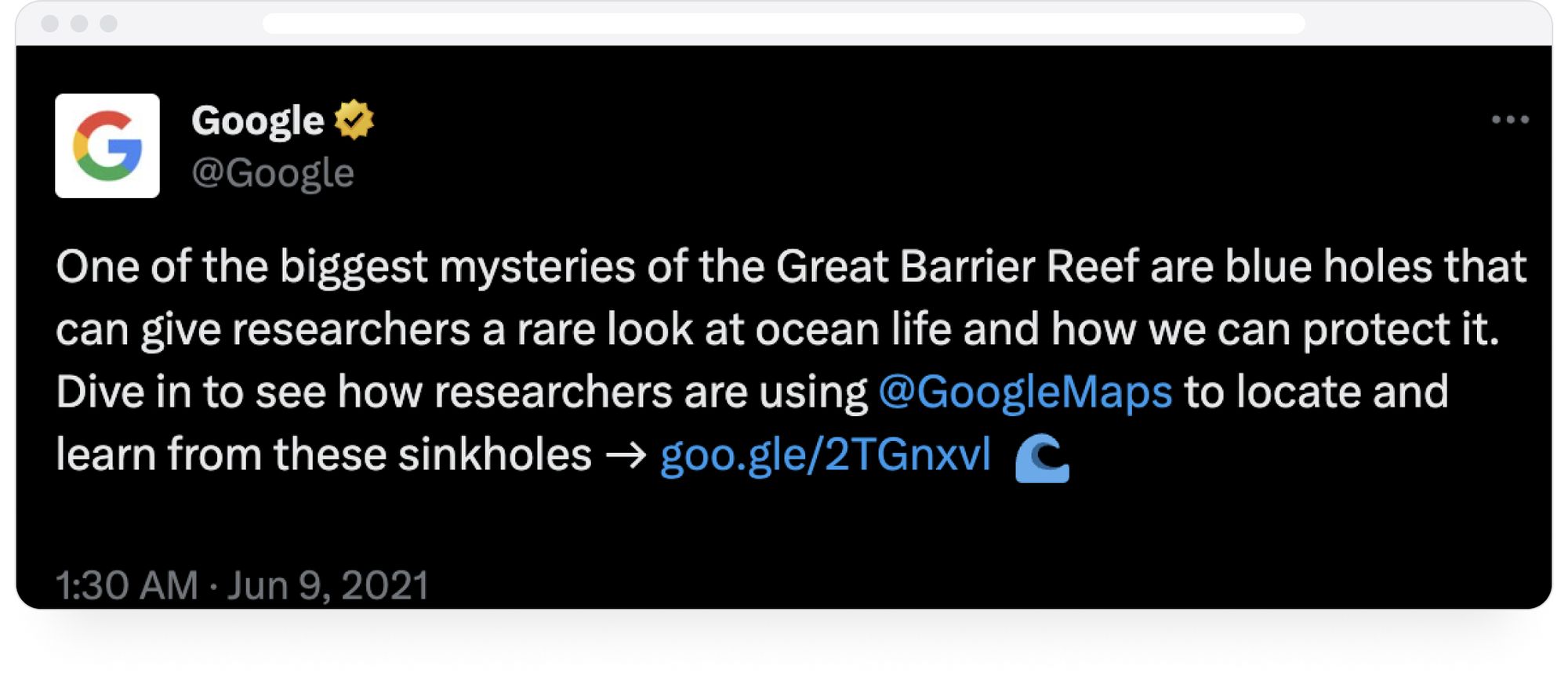
Did you know you could use Google Maps to look at sinkholes in the Great Barrier Reef? I didn't.
It's interesting to think that a tool we use to find a new gym is also used by marine biologists. With such a case study, Google posits itself as a leading innovator, having created a tool with unimaginably wide-ranging usage.
Additionally, the post highlights Google's products' environmentally sustainable applications, which definitely contributes to a positive brand image.
Bettys — winning with collabs in the social media game
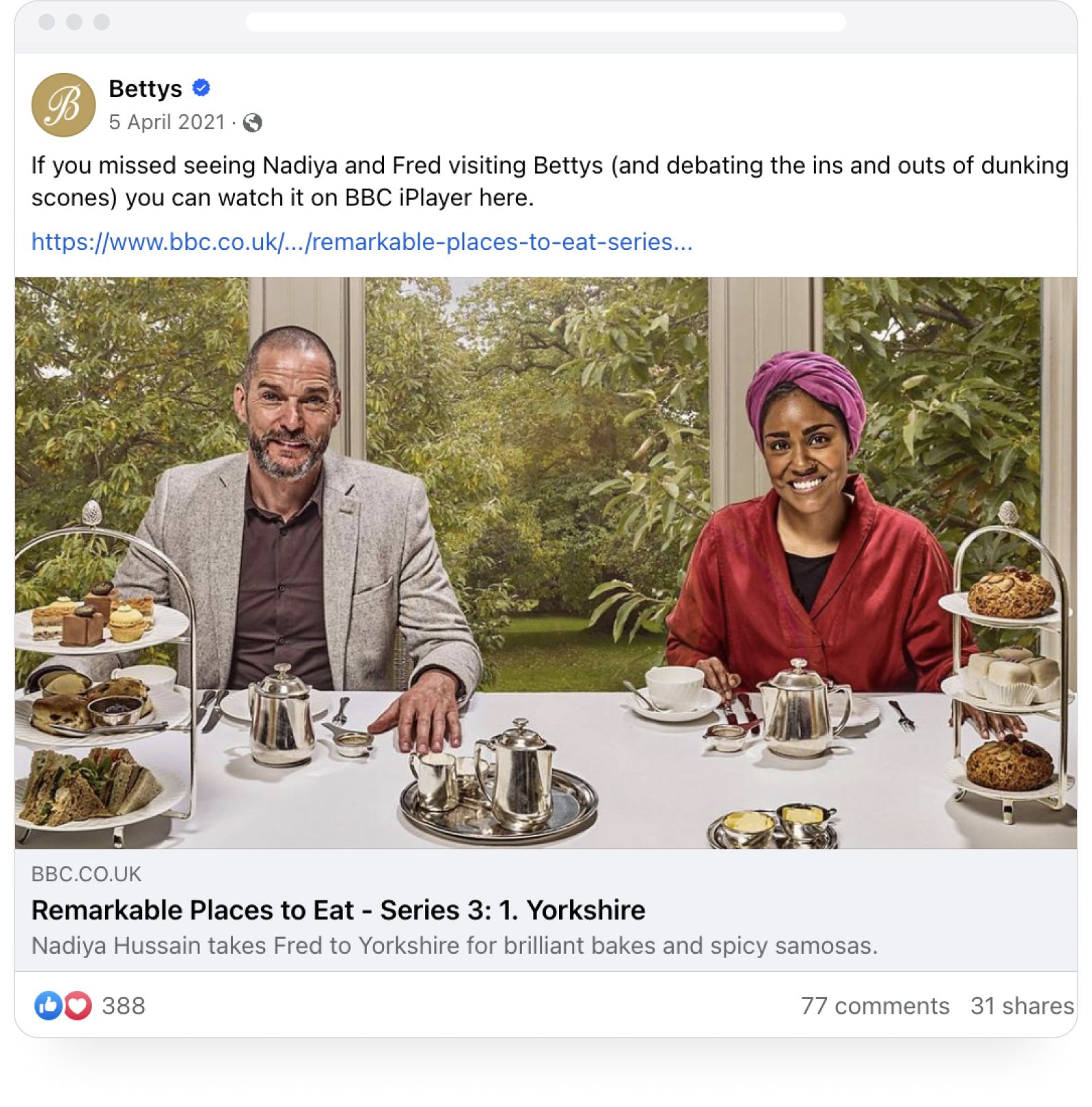
If a brand collaborates with well-known experts or influencers, that's a huge win for them. If the marketing team gets their research right, the target audience of the influencers overlaps with the brand's.
Bettys used this tactic perfectly by featuring two very popular UK-based public figures (often seen on BBC) to try out scones and talk about it. It's light and joyful and brings two worlds together — celebrities and food.
The post will be viewed by Bettys fans as well as the larger audience of BBC viewers. Such collaborations almost always result in new views, page follows, and engagement.
GravityKit — answering questions as a social media strategy
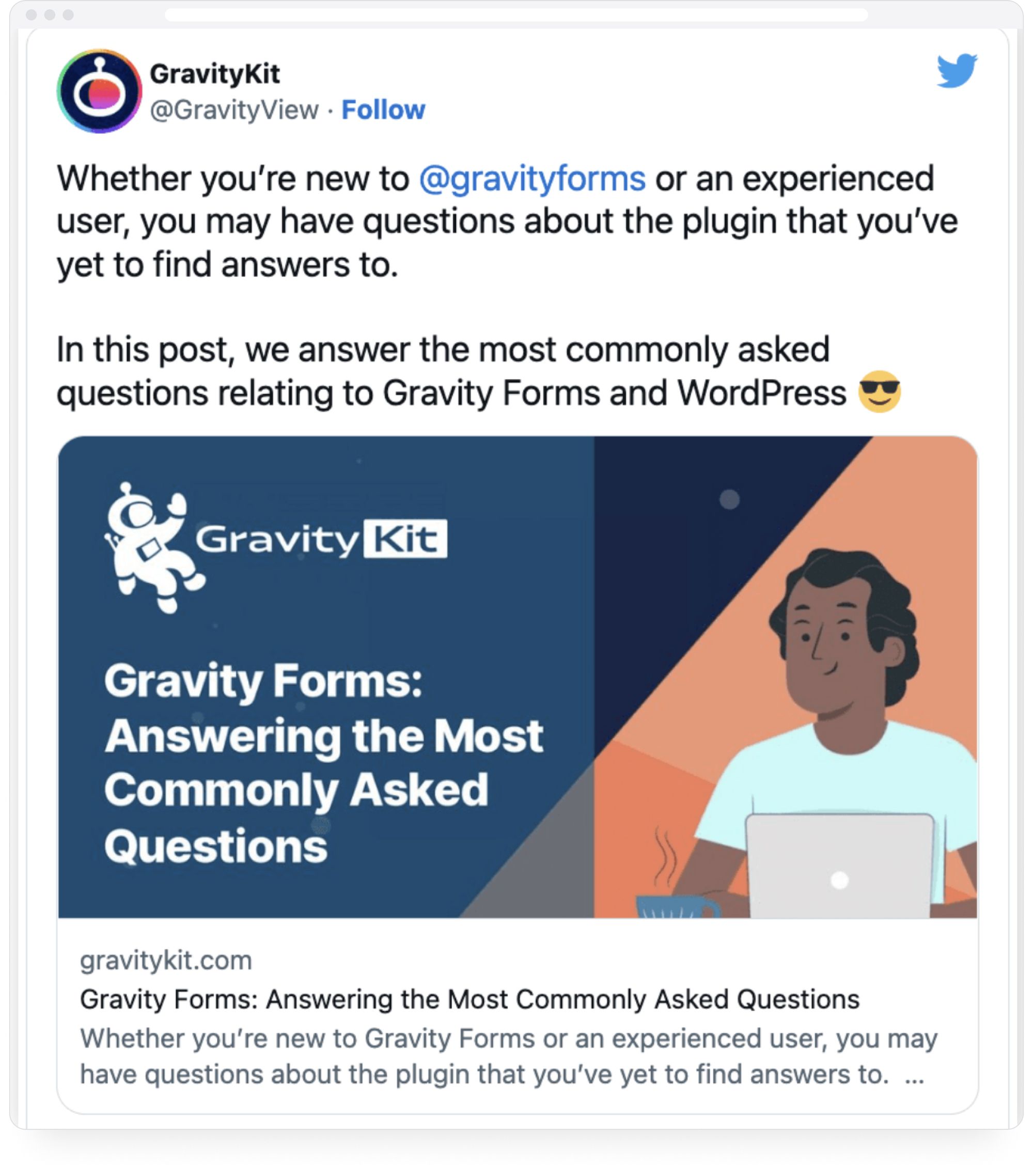
The absolute best way to make your audience feel valued is to show that you listen to them and take action based on their questions, insights, suggestions, and opinions.
GravityKit did this with aplomb by picking out and answering their audience's most commonly asked questions.
This is great content because it doesn't try to make a sale. It caters to existing customers/users by putting out content focused solely on helping them. Offering such free content is using social media at its finest, creating a positive brand image and association for the long term.
When it comes to social media, this post shows how to play the long game.
Moz — how numbers create the best social media content
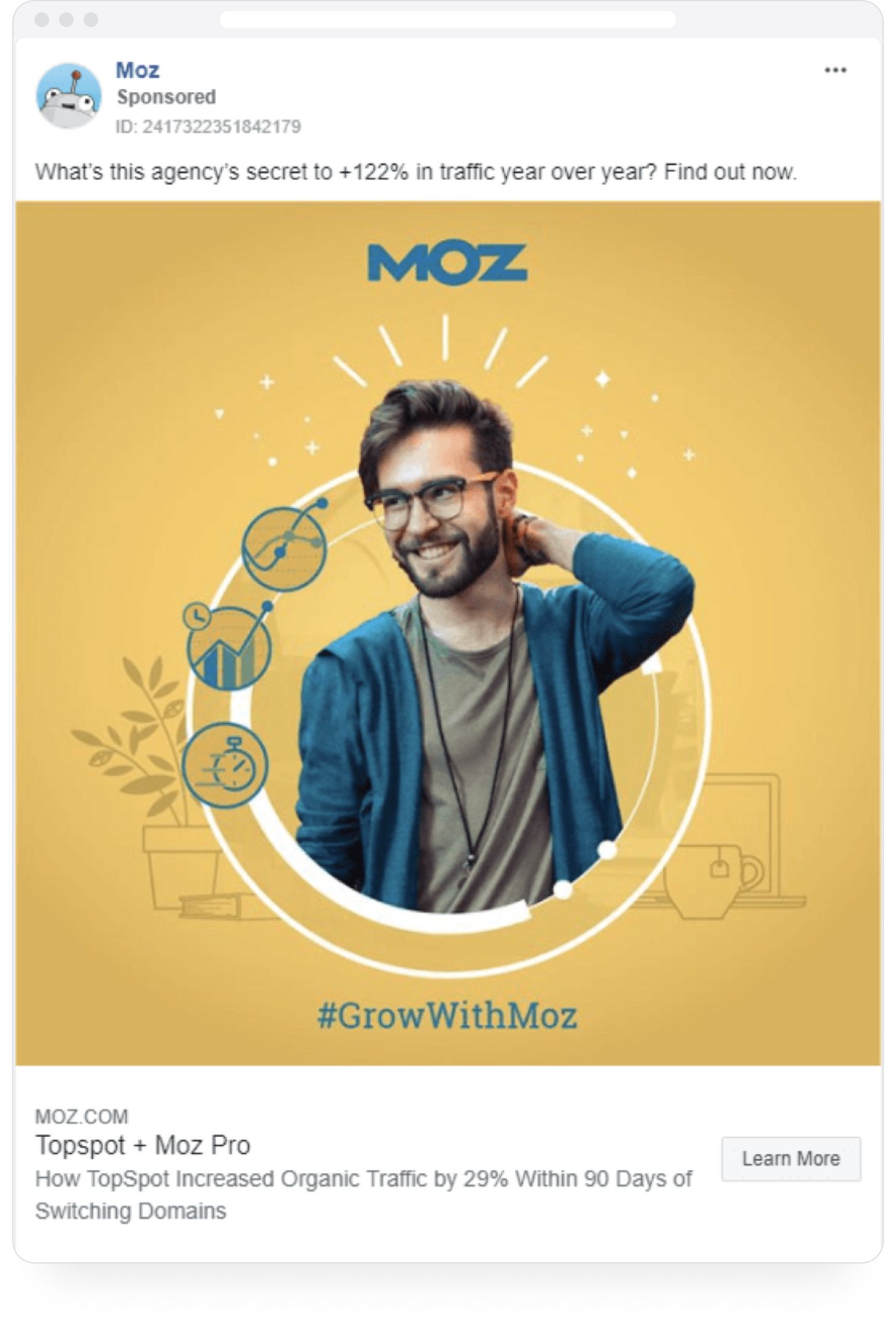
Brevity is at the heart of wit... and a great social media presence. With a single line, Moz gets all the attention of people who want to grow their businesses.
When your product has assisted a customer with growing 122% a year, you don't need to be quirky or witty. You just need to state facts and watch the signups/inquiries/conversions roll in.
So, now you know what great social media content looks like. Depending on the social media tactics being used, you'll be creating and framing different types of content to get the right audience's attention.
But once you have a collection of such posts and are a professional working in social media and content, you already know the importance of having an online portfolio showing the effective content you have created.
That said, here are three examples of excellent social media portfolios created and maintained by professionals in content creation and marketing.
3 social media portfolio examples
Deborah Singerman
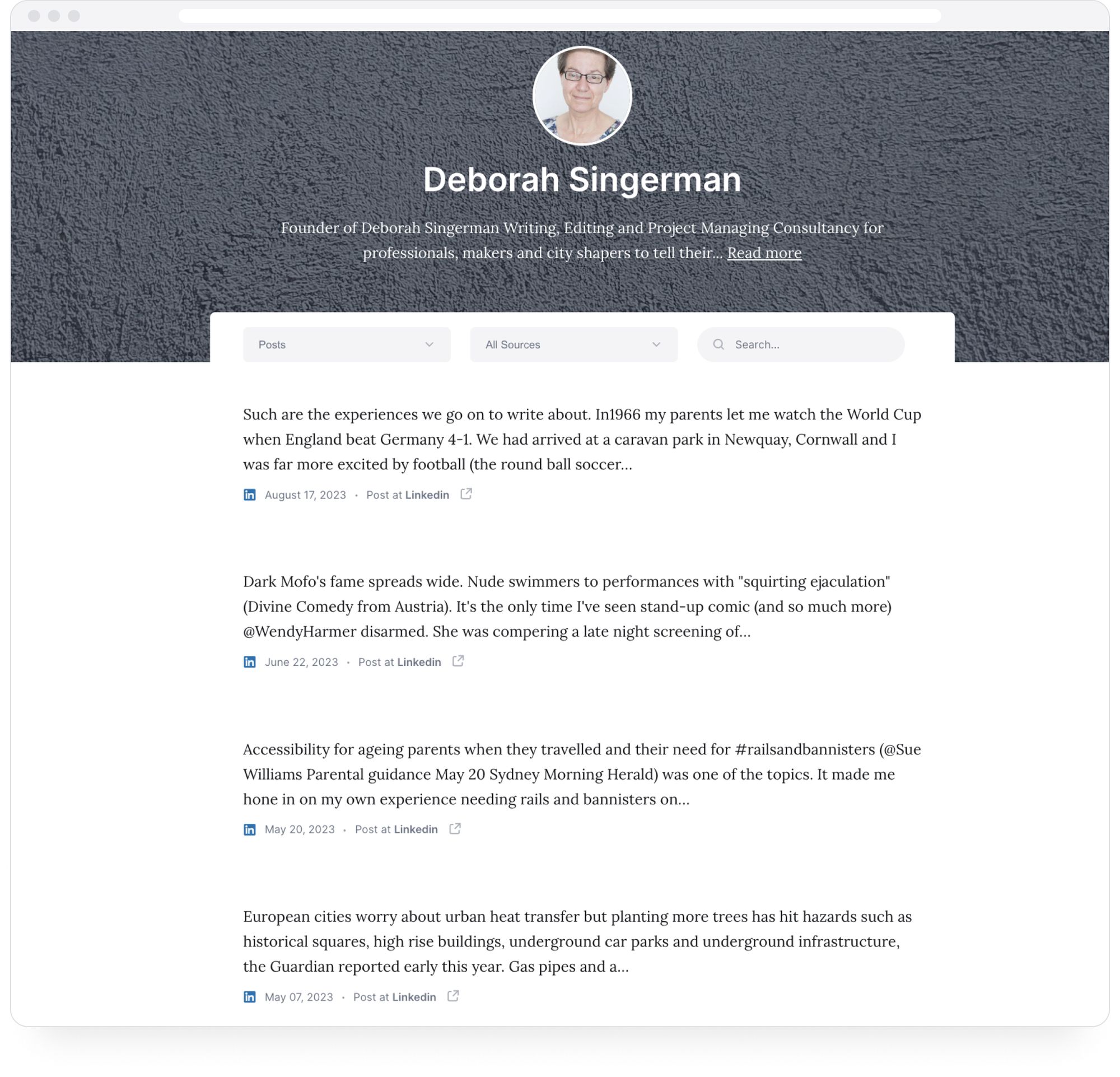
Deborah Singerman is the founder of Deborah Singerman Writing, Editing, and Project Managing Consultancy. Her work aims to help professionals, makers, and city shapers "tell their authentic stories.“
To quote her website,
She still enjoys writing about issues before they become mainstream, contributing to their increasing acceptability. These include the environment and sustainability, Australia and the Asia-Pacific, health and wellbeing, culture from high to popular, creativity and society, gender and sexuality.
Deborah mostly displays LinkedIn posts on her portfolio.
Mark O'Neill
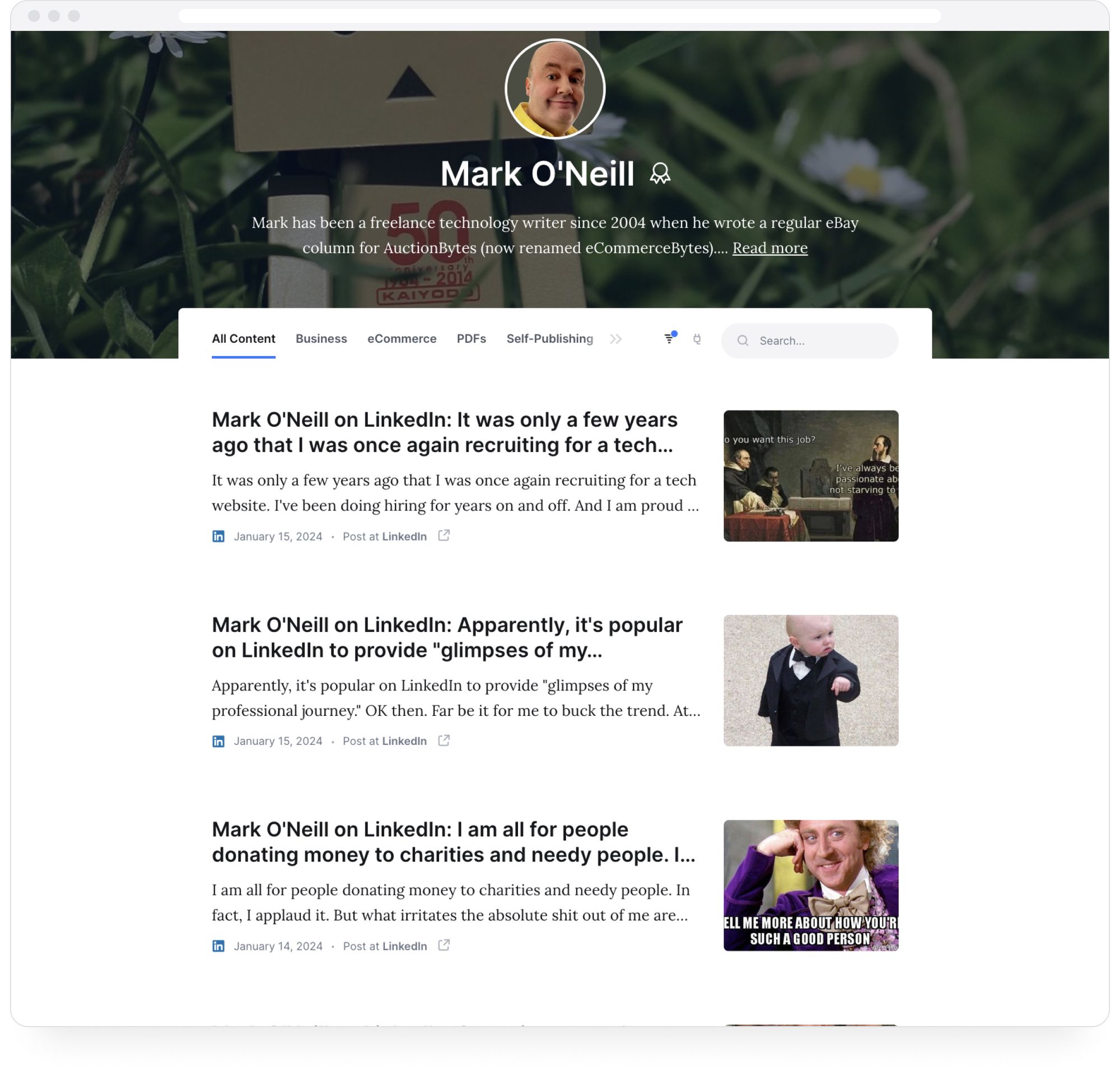
Mark O'Neill has been a freelance technology writer since 2004.
Mark has been a freelance technology writer since 2004. He started with a regular eBay column for AuctionBytes (now renamed eCommerceBytes). His articles can also be found in Bookologist, Google Tutor, and "a few other sites now lost to time (although you could probably find them on the Wayback Machine).”
He worked from 2007 as a managing editor of MakeUseOf.
He has also been the Content Management Director for Quiet Light Brokerage, and a contributing writer to publications like Lifehacker, NowSourcing (where a story of his ended up on the front page of Yahoo.com), GroovyPost, Lifewire, Trendblog, Small Business Trends, PC World, and XDA Developers.
Currently, Mark is an expert in cyber-technology and online privacy, online marketing, and online business. He is a writer and editor for Android Authority.
Jay Thompson
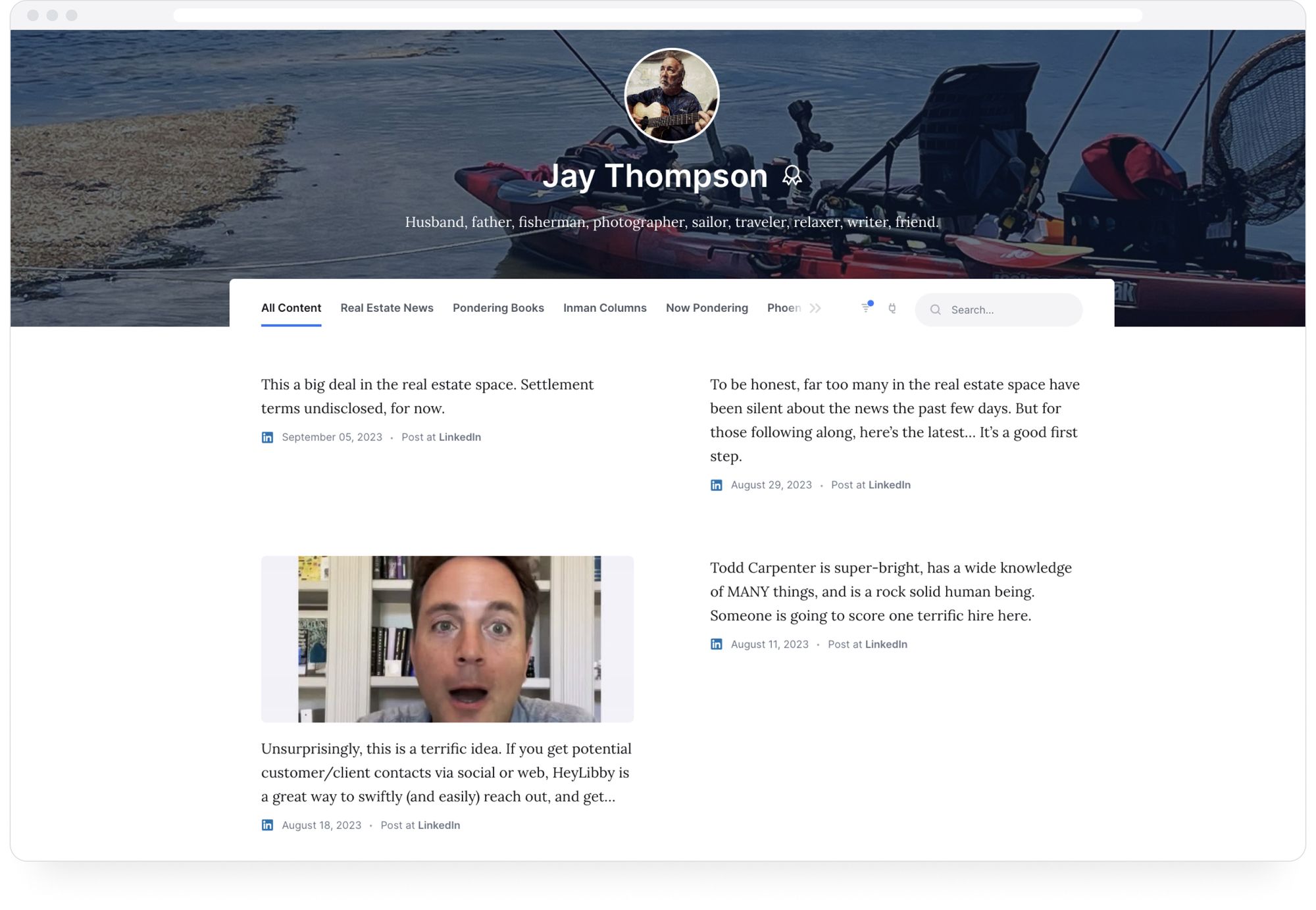
Jay Thompson went from working in semiconductor manufacturing to real estate sales. He opened a real estate brokerage firm that became profitable in month 2.
He also had an immensely successful real estate blog called Phoenix Real Estate Guy, which led Jay to real estate clients, speaking engagements, and serious networking opportunities.
He worked with Zillow (now Zillow Group), sold his blog, and "hung my broker's license with eXp Realty, becoming their 95th agent. eXp has since grown to over 85,000 agents."
Though he has retired, he is deeply involved with writing, consulting, speaking, and working gigs at his comfort.
How Authory can help you create a social media portfolio with unbelievably low effort
Authory is a tool designed to create and deploy an industry-best portfolio for writers (and multiple other professionals) as fast and conveniently as possible.
If you sign up for an Authory account, here's what you get:
A self-updating portfolio (no need to keep adding new work manually)
Authory will AUTOMATICALLY import a copy of every bylined piece from every site into its own database.
You don't have to track down links to your published work (especially older pieces). As long as you remember the URL of the site where your work exists, Authory will collate all your content for you in one dashboard.
Authory can import content from behind most soft paywalls (as long as it is a bylined piece) and some hard paywalls. However, it cannot be used to import copies of articles, podcasts, and videos you haven’t created or featured in.
There isn’t any need to manually upload/copy-paste your content. That said, if you happen to have any non-bylined content, you can always do so manually.
Automated backups (never lose your content, ever)
All the content that Authory imports from different sources is saved permanently. You'll never have to worry about losing any of your published work. Even if the original website where it's published goes defunct, you'll always have a copy safely stored on Authory's server.
All backups are in the original format — text and/or media. No screenshots.
Continued importing of past and future content (less effort for a 100% updated portfolio)
Once you enter a source, Authory won't just import your existing publications. Anything you publish on the same site (after you've fed its URL into Authory) in the future will also be imported automatically. In other words, Authory will import your past and future content.
That's not all. Authory portfolios also offer a set of secondary features:
- Ability to search through both your portfolio and your content database to find articles/audio/videos based on keywords. Prospective employers and hiring managers can use this to look for topics on your portfolio, and you can use it to find specific pieces within your Authory content bank.
- Get a custom domain.
- Multiple, low-effort options for customization to make your portfolio visually appealing and easy to navigate.
- It has built-in analytics that provide real numbers on content performance (engagement, readership) across the web and popular social media sites every 30 days. You can see how your readers/viewers are responding to your work.
- All portfolios are responsive & SEO (search engine optimization)-aligned.
Get started with Authory for free, and create a social media portfolio that stands out to the right people every single time


